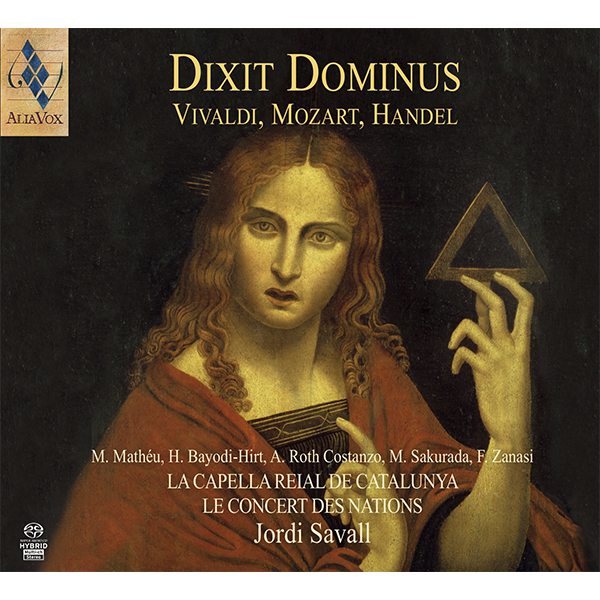DIXIT DOMINUS
Vivaldi, Mozart, Handel
Hespèrion XXI, Jordi Savall, La Capella Reial de Catalunya, Le Concert des Nations
17,99€
Reference: AVSA 9918
- M. Mathiéu, H. Bayodi-Hirt, A. Roth Constanzo, M. Sakurada, F. Zanasi
- La Capella Reial de Catalunya
- Le Concert des Nations
- Jordi Savall
Dixit Dominus is the opening text of the Catholic Church’s Latin version of Psalm 110 (Psalm 110 according to the original Hebrew numbering, Psalm 109 according to the Greek Septuagint, which was subsequently adopted by the Vulgate). Traditionally attributed to King David, it most likely refers to a victory of Israel over its enemies, led by King David, who, figuratively speaking and using a symbol of Oriental origin, made his enemies a footstool for his feet (verse 1); it has also been suggested that it formed part of a coronation ceremony (“Sit at my right hand”, verse 1), perhaps belonging to the rite described in verse 9. In the rather confusing opening text, which reads “Oracle of the Lord to my Lord”, the first of these Lords is presumably God, while the second is King David himself. Later, in the New Testament, the text was interpreted as referring to the Messiah, in which the second Dominus referred not to David but to Jesus Christ.
DIXIT DOMINUS
Dixit Dominus is the opening text of the Catholic Church’s Latin version of Psalm 110 (Psalm 110 according to the original Hebrew numbering, Psalm 109 according to the Greek Septuagint, which was subsequently adopted by the Vulgate). Traditionally attributed to King David, it most likely refers to a victory of Israel over its enemies, led by King David, who, figuratively speaking and using a symbol of Oriental origin, made his enemies a footstool for his feet (verse 1); it has also been suggested that it formed part of a coronation ceremony (“Sit at my right hand”, verse 1), perhaps belonging to the rite described in verse 9. In the rather confusing opening text, which reads “Oracle of the Lord to my Lord”, the first of these Lords is presumably God, while the second is King David himself. Later, in the New Testament, the text was interpreted as referring to the Messiah, in which the second Dominus referred not to David but to Jesus Christ.
+ information in the CD booklet
JOSEP MARIA VILAR
(Extract of CD text)
Translated by Jacqueline Minett







Share